“Fronting upon a park of fourteen hundred acres, our location could scarcely be improved upon, ….”
On April 28, 1915, Robert S. Brookings, president of Washington University, spoke these words at the dedication of the Washington University School of Medicine newly relocated to the edge of St. Louis’s Forest Park.
The new medical campus which included Barnes Hospital and St. Louis Children’s Hospital was built along the eastern edge of Kingshighway Boulevard, then the border with Forest Park.
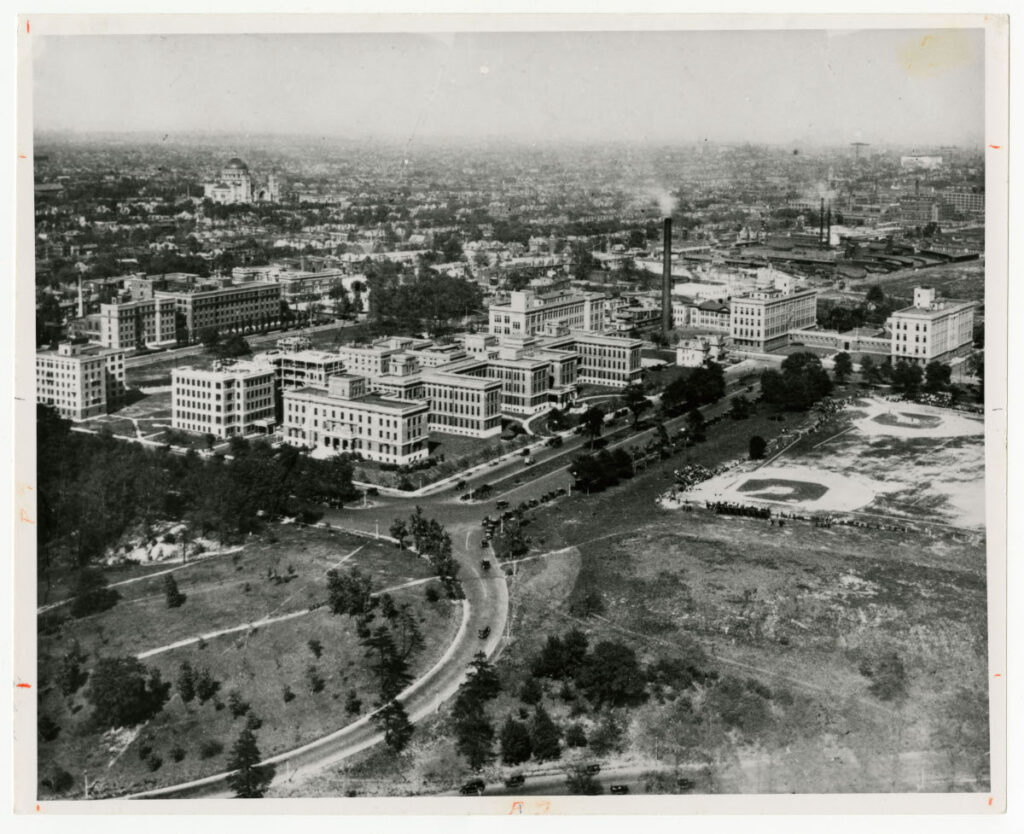
The original route of Kingshighway made a sharp turn to run west to east in front of Barnes Hospital before again making a sharp turn to continue on a straight north to south line.
The southeast corner of Forest Park bumped out from the rest of the park keeping Kingshighway its eastern border.
A couple of baseball diamonds were in this corner of the park and were popular with the faculty and students at the School.
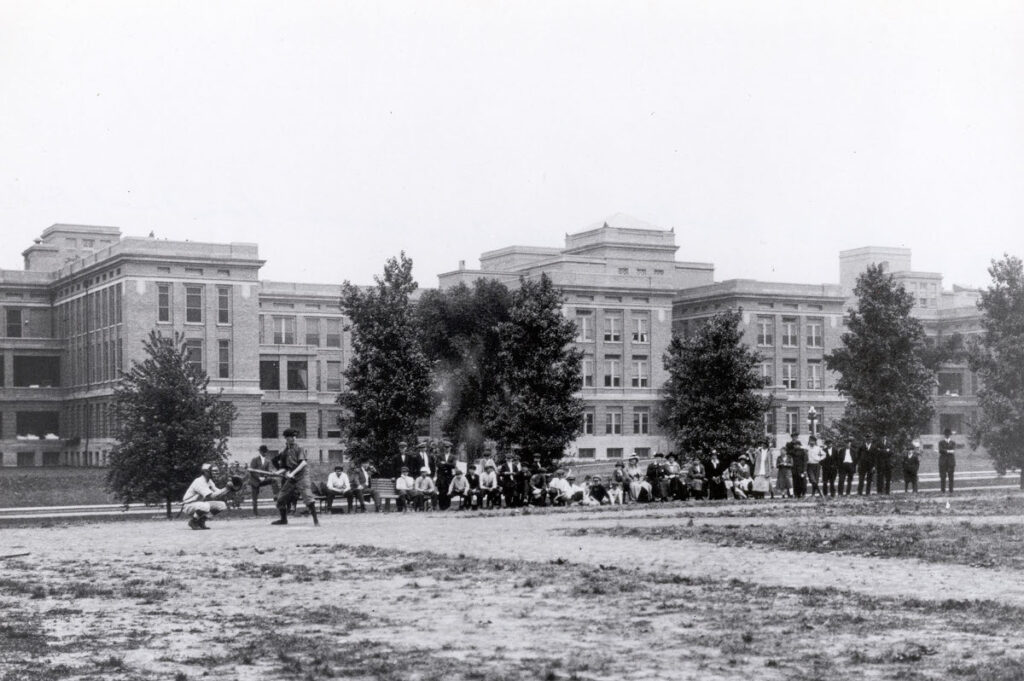
By the 1940s the playing fields in front of Barnes Hospital were turned into a manicured garden with a pergola and long avenue of pine trees.
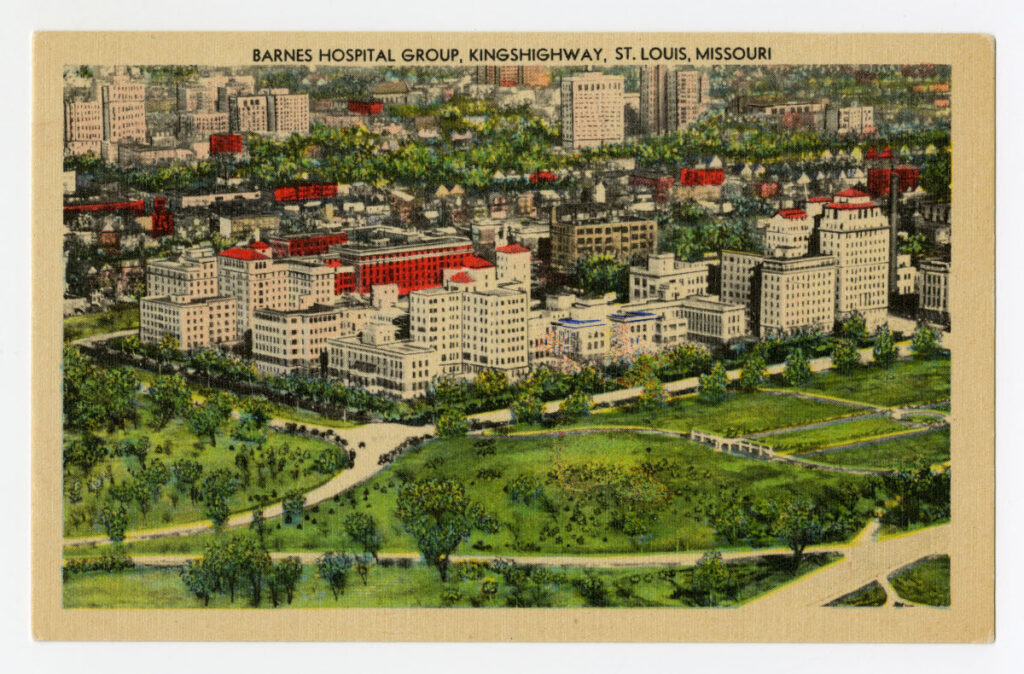
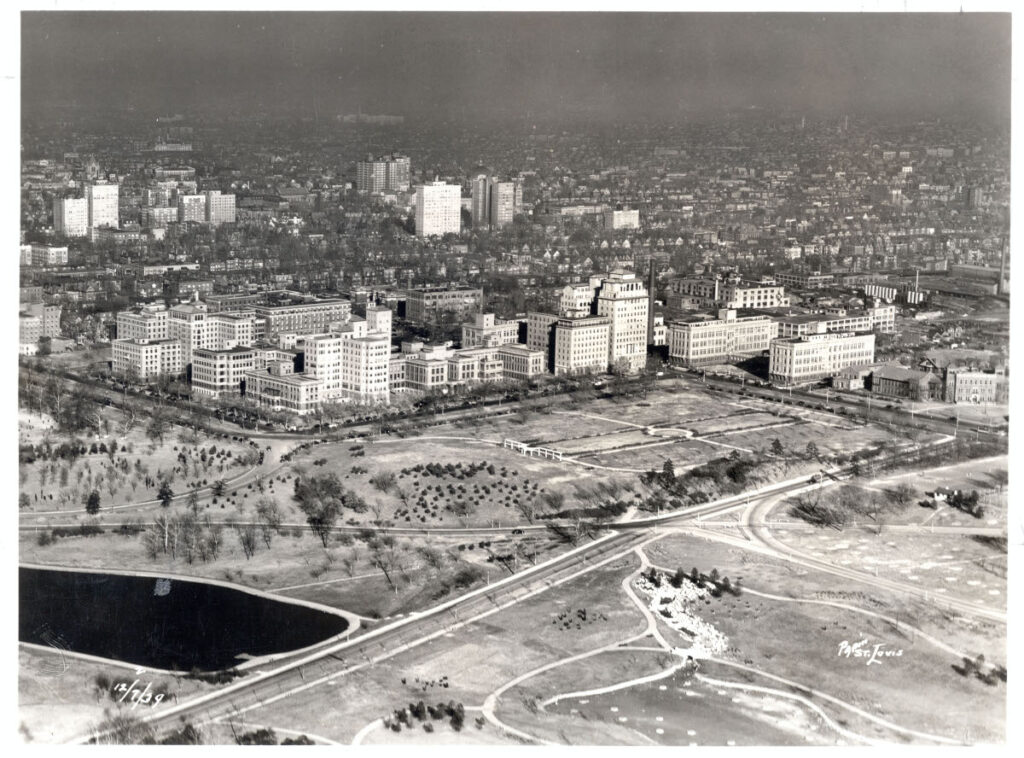
In the 1960s US Highway 40 was expanded and renamed Interstate 64. The city and highway planners took the opportunity to redesign the intersection of Kingshighway and the new interstate highway. The route of Kingshighway was straightened and a cloverleaf interchange was created within Forest Park.

With Kingshighway rerouted, the street in front of Barnes Hospital was renamed Barnes Hospital Plaza while the few blocks that ran in front of the North and South Buildings became a continuation of South Euclid Avenue. The School of Medicine’s official address was changed from 660 S. Kingshighway to 660 S. Euclid Avenue.
Around this time the City of St. Louis allowed other developments within Forest Park including the James S. McDonnell Planetarium just west of the new cloverleaf interchange and an underground communications center in a sliver of the park south of the interstate.
Barnes Hospital also began planning for a major expansion. A new, massive building would be built in two stages along Barnes Hospital Plaza along with an underground parking garage built under the southeast corner of Forest Park.

In 1973 Barnes Hospital and the Washington University Medical Center secured a lease from the City of St. Louis to build the underground parking garage.
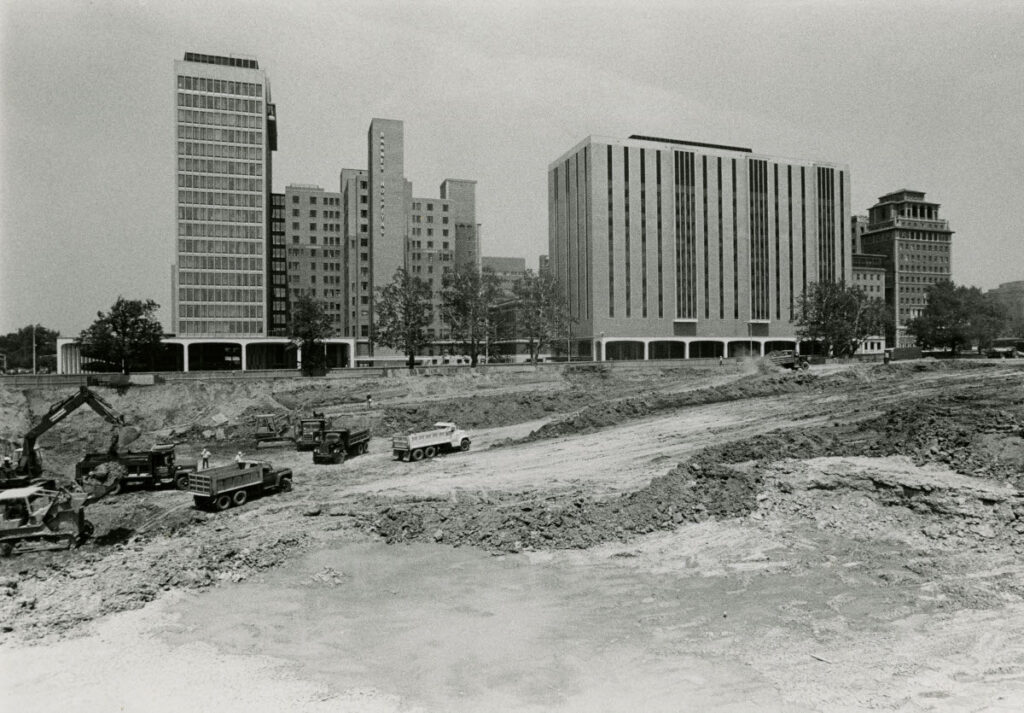
By 1976 the garage was opened and the park surface above was landscaped to include several new tennis courts. The courts were named for Richard Hudlin, a nationally prominent tennis coach and long-time teacher at Sumner High School. Before coming to St. Louis, Hudlin had played tennis for the University of Chicago from 1926-1928 and was captain of the team in 1928. In 1945 he successfully sued St. Louis’s Muny Tennis Association to end segregation of the city’s tennis courts. He became the first African-American member of the St. Louis District Tennis Association and eventually became President of the Muny Tennis Association.
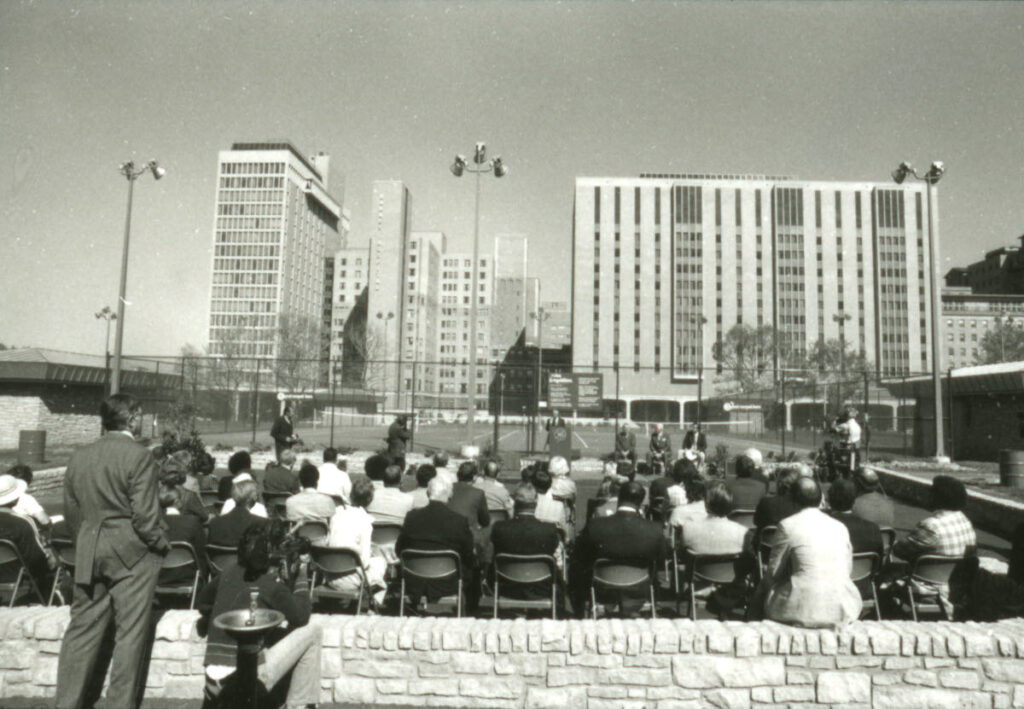
As a coach Hudlin is best known for working with Althea Gibson and Arthur Ashe. Althea Gibson became the first African-American to win a Grand Slam title in 1957. She eventually won eleven Grand Slam titles in her career including both Wimbledon and the US Nationals back-to-back in 1957 and 1958. Arthur Ashe, won three Grand Slam titles and was the first Black man to win at Wimbledon and the US Open. The main court of the US Open tennis tournament is named the Arthur Ashe Stadium in his honor.
Both Gibson and Ashe had come to St. Louis just to train with Hudlin at the indoor tennis courts at the St. Louis Armory building. The indoor court allowed them to train over the winter months. Because of Hudlin’s success at ending the segregation of St. Louis tennis courts, the Armory was one of the few indoor courts in the nation open to Black athletes. The Armory’s courts were played on a fast, wood surface which forced players to develop their serve and volley techniques.
While Gibson trained only a short time with Hudlin, Ashe moved to St. Louis and attending Sumner for his last year of high school while training with Hudlin. Ashe credited his time training at the Armory with Hudlin as transforming his game.
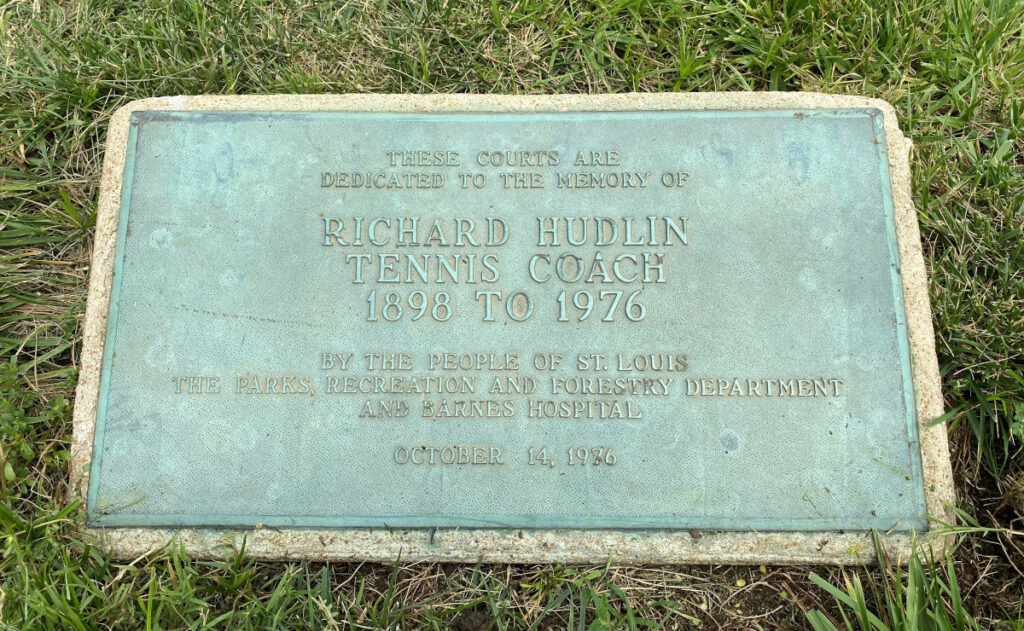
In 1983 the lease between the city and hospital was extended and the parking garage was enlarged adding an additional entrance on Clayton Road. A playground and handball courts were also added to the surface landscaping at that time.
In 2007 a new lease with the city and the hospital, now named Barnes-Jewish Hospital, was approved allowing for the continued use of the land by the hospital until 2096. The hospital agreed to maintain the land as a “park-like setting” and to make a payment of $1,500,000 per year toward a fund supporting the Forest Park Master Plan.
Read the Barnes Hospital Bulletin from November 1976 here which covers the dedication of the Hudlin courts, and the St. Louis city ordinance approving the current lease agreement here (archived here).
